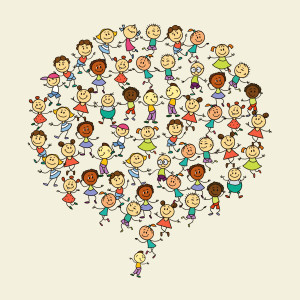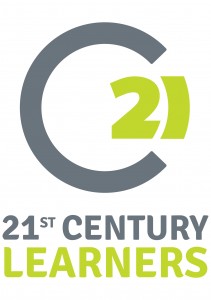What is Dialogic Education (and why should I care)?
In the glossary of our forthcoming book ‘Dialogic Education: Mastering core concepts through thinking together’, Professor Rupert Wegerif defines Dialogic Education as ‘Education for dialogue as well as through dialogue’, adding that its defining aim is ‘that students get better at dialogue’.
The term ‘dialogue‘ is often used as a synonym for talk, but in this context it means something more specific. In the first figure below, taken from Wegerif’s book ‘Mind Expanding’, we see two people talking, but with their minds closed to each other’s ideas. They have access to only one point of view – their own – which they believe to be the one valid perspective. This is not dialogue, but monologue, and the thinking of the participants is not dialogic, but monologic.
The situation is different in the second figure. Here the interlocutors are exploring each other’s views and are able to see their own arguments from the perspective of the other. It’s hard to say to whom each idea belongs; ideas exist in a shared space between them where they are allowed to play around each other, sparking new ideas and alternative perspectives. This is a ‘shared chain of thinking’; the participants are ‘thinking together’ or engaging in dialogue. This kind of thinking – thinking that progresses creatively through the interplay of different perspectives – is dialogic. And dialogic thinking is not confined to dialogues between people; there is strong evidence to suggest that teaching children to get better at thinking together helps them to get better at thinking alone too.
In our book we argue that thinking dialogically helps us to become better educated in a variety of ways. One of these is that we are better able to gain a deep understanding of powerful concepts that shine a light on subjects across the curriculum. ‘Mastering’ these concepts might involve being able to engage in dialogue around them, asking and answering questions and being able to explain what makes them distinct from related concepts. It also involves seeing them from the perspective of the subject; force needs to be understood from the perspective of science, proof from the perspective of mathematics and love from the perspective of Christianity. This is a dialogic process involving switching between everyday perspectives and more academic ones (see Rupert Wegerif’s blog for a more detailed discussion).
But even the ‘academic’ meanings of concepts are not fixed. Just as children’s understandings evolve over time, so too, over longer periods of time, do the meanings of the concepts themselves. This is important because it helps children to see that they are not the inheritors of a ‘dead’ body of knowledge, but of a living and evolving ‘conversation’ which they might aspire to take forward into the future. In the book we provide a series of exemplar teaching sequences (underpinned by five key principles of Dialogic Education) focused on supporting children to gain conceptual mastery in different subject areas.
However, there is much evidence to suggest that becoming proficient in dialogue is not as easy as it might seem; it is essential that we teach children how to engage in dialogue as well as teaching them through the medium of dialogue. In the first part of the book we bring together aspects of two approaches which have been shown to be effective for teaching dialogue (Philosophy for Children and Thinking Together) to provide a framework for the development of effective dialogue in classrooms.
Ultimately dialogic education is an adventure in which children are invited to participate. Their prior-learning and everyday knowledge is valued and brought into dialogue with other perspectives, including those of the academic subjects they are studying. Teachers are the gateway through which the children can find value for and excitement in this wider conversation of humanity, which, once joined, will sweep them away to a lifetime of new discoveries and new meanings.
‘Dialogic Education: Mastering core concepts through thinking together‘ is available to pre-order from Routledge. The book is aimed primarily at teachers of seven to eleven year-olds, but the ideas it contains are applicable to the teaching of any age group. It contains contributions from Giles Freathy, Taro Fujita and Anita Wood. We hope you enjoy it.



